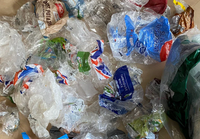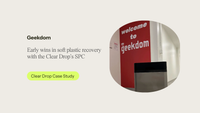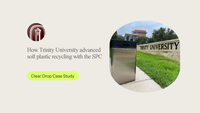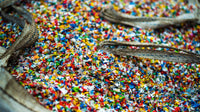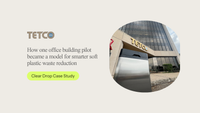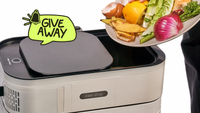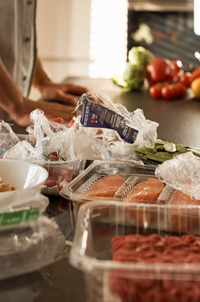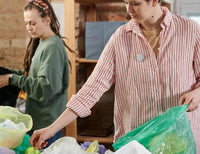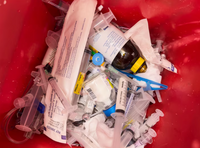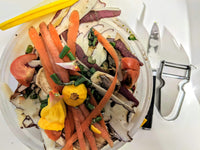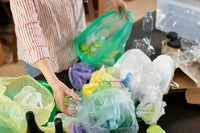Key Takeaways
- Only 1% of U.S. households have access to curbside film recycling. Home devices like the Clear Drop Soft Plastic Compactor (SPC) fill that gap.
- Soft plastics make up ≈ 21% of the U.S. packaging market, yet only about 13% of all plastic packaging gets recycled nationally.
- Recycling soft films can reduce GHG (greenhouse gas) emissions by 8%–23% compared to virgin plastic (made from previously unused materials, such as natural gas or crude oil).
- Every ton of recycled plastics saves ≈ 5,800 kWh of energy and 1.7 metric tons of CO₂ emissions.
No matter how diligent you are with recycling, the truth is, most plastics labeled “recyclable” still end up in landfills. Curbside systems in the U.S. aren’t designed for soft films and flexible packaging, meaning these materials often get rejected. In fact, only 1% of U.S. households can currently recycle film plastics through local collection (The Recycling Partnership, 2021).
That’s where the Clear Drop Soft Plastic Compactor (SPC) fills a necessary gap. The SPC is a simple home device that lets you collect and compact soft plastics so they can be properly recycled through certified partners.
Why Soft Plastic Recycling Matters
Many of us amass quite a few soft plastics on the daily, including bags, wrappers, and packaging. These plastics are typically lightweight and flexible — qualities that make them useful but hard to process in traditional MRFs (material recovery facilities).
- Nationally, the plastic packaging recycling rate is 13.3%, with soft plastics representing only a small part of it, according to the U.S. Plastics Pact 2023–24 Impact Report (US Plastics Pact, 2024).
- Soft plastics account for ≈ 21% of U.S. packaging sales (≈ $41.5 billion per year) (Packaging Digest, 2023).
- To reach just a 30% film recycling rate, the country must recover 3.1 billion pounds of it per year (The Recycling Partnership, 2021).
- Recycling flexible plastics cuts GHG (greenhouse gas) emissions by 8%–23% compared to producing new plastic (Plastic Film Recycling Org).
- In 2025, North American recyclers processed 4.2 million tons of post-consumer plastic — just 13% of the total PE/PET/PP consumed (Sustainable Packaging Coalition, 2025).
Clearly, there’s plenty of room for improvement — and it can start one home at a time: with the Clear Drop SPC.
10 Surprising Soft Plastics You Can Recycle

All of the following items are often rejected by most curbside systems but can be accepted by the Clear Drop SPC, once cleaned and dried:
1. Ziplock bags
Simply rinse, dry, and add to the SPC.
2. Bread bags (typically LDPE #4)
Empty, shake out crumbs, and dry completely before compacting.
3. Cereal box liners
Separate the inner film liner, dry it, and add to your SPC.
4. Frozen food bags
After use, defrost, rinse off residue, dry, and add to the SPC.
5. Bubble mailers
Plastic-only mailers (without paper layers) can be deflated and compacted.
6. Snack wrappers
Single-layer poly wrappers (e.g., granola bars) are fine to add to the SPC, just avoid any with metallic film.
7. Produce wrap
Most cling film from fruit and veggie trays is LDPE, meaning you can rinse, dry, and compact it.
8. Pet food bags
Clean out oily residue from PP (polypropylene) bags, dry, and compact.
9. Dry cleaning bags
Remove tags or tape, dry, and feed into the SPC.
10. Packaging air pillows
Deflate, flatten, and compact these LDPE shipping cushions.
When compacted, all of the above films become part of your SPC block, a dense, clean unit ready for recycling.
How to Prepare Soft Plastics for SPC Recycling

Follow these quick steps to ready your soft plastics for the SPC:
- Clean: Rinse off all food or oil.
- Dry: Air-dry thoroughly.
- Compact: Insert the plastic into your SPC.
- Ship or Drop Off: Send your full soft-plastic block to a Clear Drop partner.
Do: Rinse and dry plastics, remove labels, keep items light.
Don’t: Include wet, dirty, or foil-lined film.
What Happens After Collection: The SPC Recycling Process

Here’s what happens to your plastic after you ship your SPC block:
- Transport & Inspection: SPC blocks go to certified U.S. partners, such as Frankfort Plastics in Indiana.
- Sorting & Shredding: Plastics are sorted and granulated.
- Cleaning & Pelletizing: Flakes are washed and melted into new resin.
- Reuse: Resin becomes new, durable construction products, such as outdoor furniture, or decking/composite pallets.
According to the EPA, recycling one ton of plastics saves ≈ 5,800 kWh of energy and prevents 1.7 metric tons of CO₂ emissions (EPA 2024). By using the SPC, you help turn “hard-to-recycle” films into feedstock for new products, closing the loop and supporting a more circular economy.
The Clear Drop SPC in Numbers
|
Metric |
U.S. Statistic |
Source |
|
Soft-plastic share of packaging |
≈ 21% ($41.5 billion market) |
|
|
National plastic-packaging recycling rate |
13.3% |
|
|
Households with film recycling access |
≈ 1% |
|
|
Goal for 30% film recycling |
3.1 billion pounds needed annually |
|
|
GHG savings from film recycling |
8%–23% |
|
|
Plastic recycled in North America (2025) |
4.2 million tons (≈ 13% of PE/PET/PP) |
Be a Leader in Better Recycling
Ready to go zero-waste at home? Recycle more than you thought possible with the Clear Drop SPC, and cleanly collect your food scraps with our Organics Collector. Discover Clear Drop’s full range of at-home recycling and composting solutions at onecleardrop.com.

